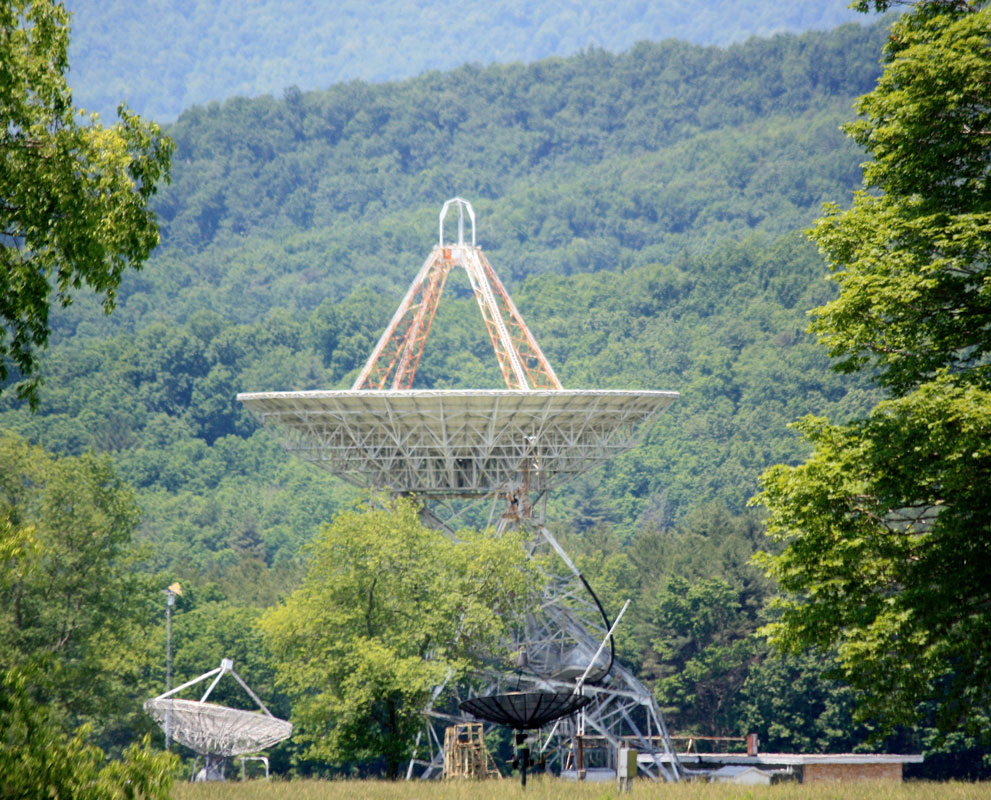

In the center of the image is the Tatel telescope, named after Howard E Tatel. Howard Tatel was a seismologist who also studied gravity and radio astronomy. His work in radio astronomy led to the design and production of a radio telescope at the Carnegie Institute Department of Terrestrial Magnetism. Built in 1958, it is the first major radio telescopes built at NRAO. Also called the 85-1 telescope, it is 85 feet across and it was one of three telescopes of the Green Bank Inteferometer that was a testbed for the Very Large Array interferometer in Socorro, NM. The Green Bank Interferometer is 2425 meters long (farthest antenna to closest antenna). Due to funding constraints, the Green Bank Interferometer ceased operations in October 2000. The third telescope in the array, 85-3, is now being used to monitor pulsars. Another claim to fame is that the Tatel (85-1) telescope was used by Frank Drake for the first search for extraterrestrial intelligence in Project Ozma in 1960.
In the background (lower left part of the image) is the 40-foot telescope. It has been used as an educational instrument by teachers, their students, and amateur astronomers since 1987. It was constructed in the early 1960s to see if radio sources are variable. It was probably the first completely automated telescope. After several years of astronomy research it wasn't used at all until it was re-dedicated to educational purposes. I used this telescope in the June 2011 Chautauqua short-course along with other college science teachers. My project was to see if the 40-foot telescope could detect the new galactic arm (select the link to read the results of that).
In the foreground near the center-bottom of the image is a small black dish called the RFI Survey Antenna used to find and measure the sources of radio frequency interference (RFI).
Previous -- Next -- Return to start of tour
last updated: September 5, 2011